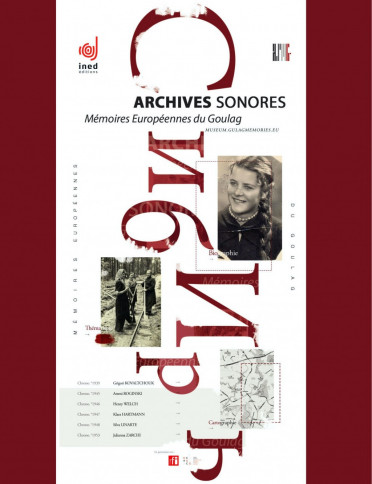70th anniversary of Stalin’s death. European Deportees to Stalin’s Gulag recount
When Stalin died on March 5, 1953, at the age of 74, deportees and prisoners of the Gulag could at last hope to be released. All of them remember that early morning when the news of his death was announced at rollcall. Many of them were originally from Central and Eastern Europe, particularly Ukraine; they had been deported to Siberia, in Russia’s Far North, or Central Asia between 1940 and the early 1950s. Mémoires européennes du Goulag/European Memories of the Gulag, an online publication that developed out of a research project launched in 2008 by INED and the CERCEC [Center for Russian, Caucasian and East European Studies] (EHESS/CNRS) in partnership with the French international radio station RFI (Radio France Internationale) and continuing to this day, uses a new type of online editing that gives website visitors access a considerable number of accounts collected by researchers in recorded interviews with former Gulag deportees. The biographical material includes interview excerpts, photos, and videos; there are also maps and specific topic files. One such file is dedicated entirely to the death of Stalin/the day Gulag inmates learned of Stalin’s death: https://www.gulagmemories.eu/fr/archives-sonores/salle/mort-de-staline
The history of forced displacements by people subjected to them
Mémoires Européennes du Goulag began as a collection of interviews with persons sent between 1940 and 1952 to special remote villages and prison-hard labor camps by the repressive Soviet authorities.
Today this digital publication is being further developed by INED in partnership with CERCEC, Radio France Internationale (RFI), Humathèque Condorcet, and the Géographie-Cités laboratory of the University of Strasbourg. It brings to light both a collective experience (mass deportations) and the particularities of some individual trajectories, the conditions in which these exiles survived, and their experiences of release and return. Mémoires européennes du Goulag/European Memories of the Gulag invites us to discover the history of the deportations that Stalin ordered by way of life story excerpts, topic files, and maps. It presents 85 interviews accompanied with never-before-published documents—private and public archival material and photos—all collected by an international team of researchers. Taken together, these narratives and accounts—particularly the life-story excerpts—offer an unprecedented view of events specific to World War II and Stalinism.
An alternative model of scientific publication
The multimedia format of European Memories of the Gulag combines texts with visual material and sound archives, offering the visitor a full perspective on the research subject and its findings. It is a dynamic publication, evolving together with continuing research on forced displacements across the vast spaces of Central and Eastern Europe and the former Soviet empire, and as new data and new analyses are gradually integrated.
The website already exists in 4 languages—French, English, Polish, Russian—and Ukrainian will soon be added, offering a view of science in action to an increasingly wide international audience of researchers, teachers, and the public at large.
On line:March 2023

